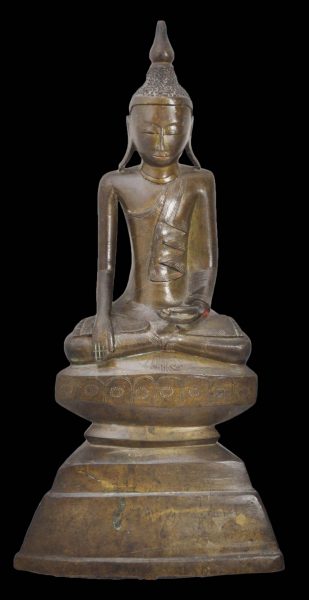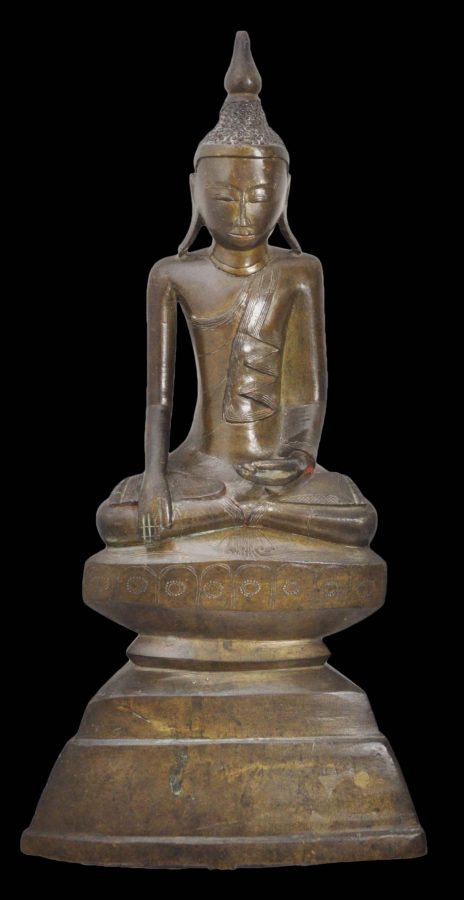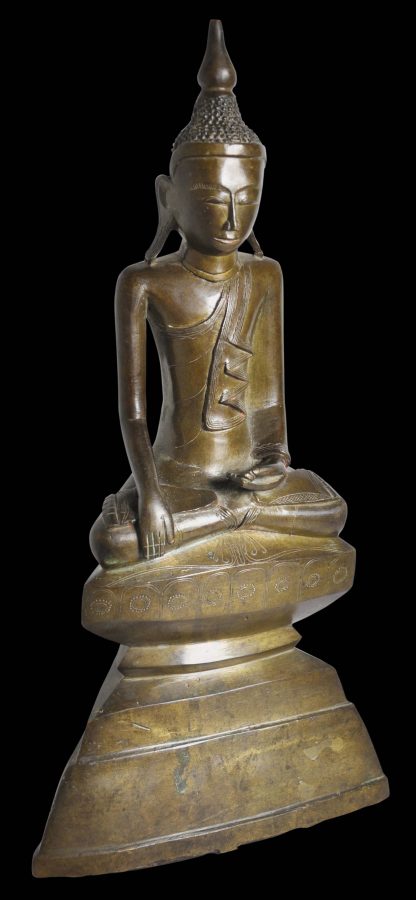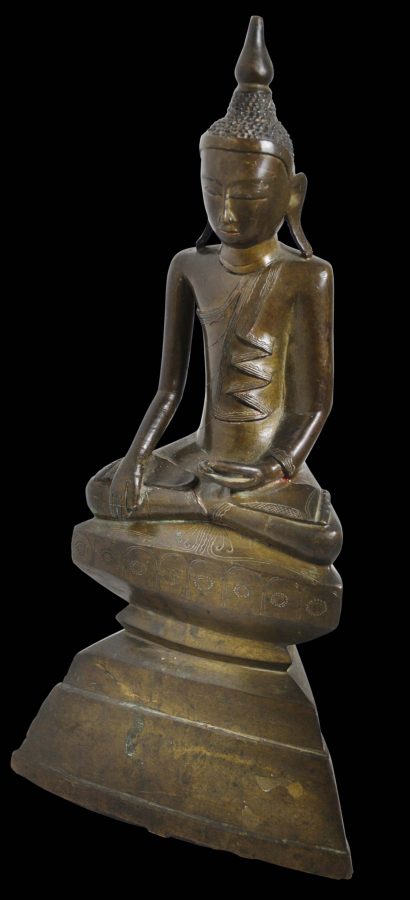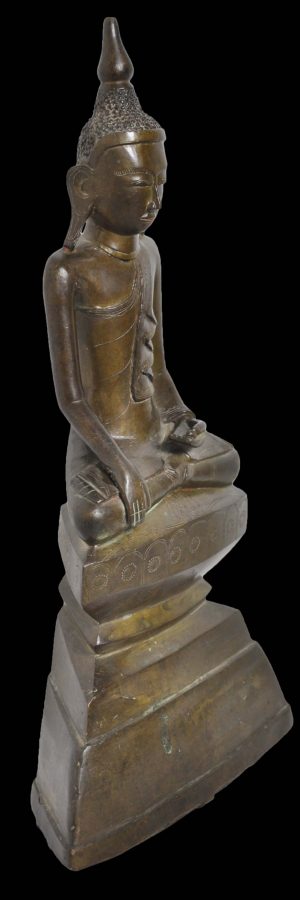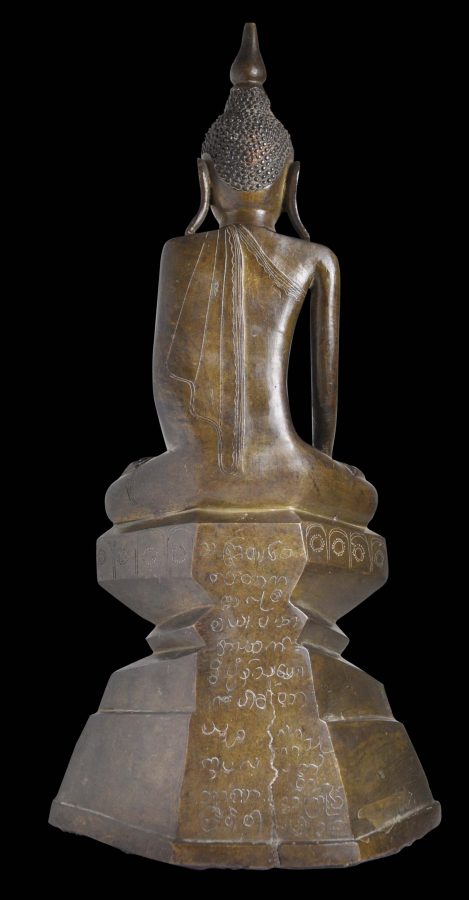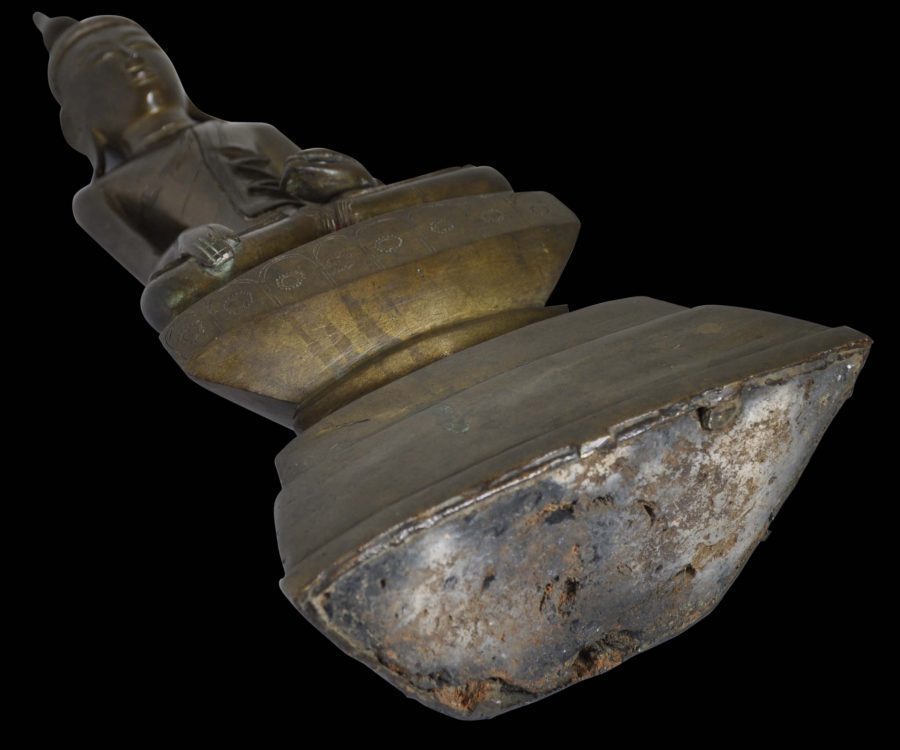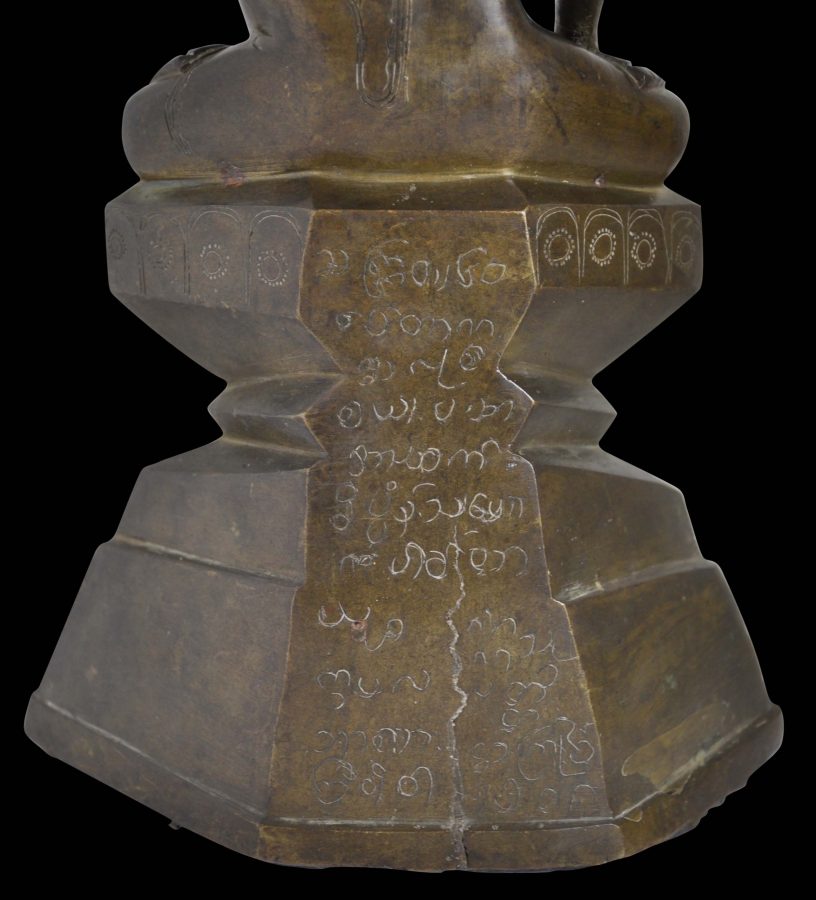This image of the Buddha has been cast as a single piece. It is of good size, with a pleasing ‘boyish’ face, but is unusual for the narrow depth or thickness, and for the dramatic robe folds down the chest.
The image sits in the ‘earth touching’ or bhumispara position, also known as the ‘calling the earth to witness’ pose, whereby the Buddha, seated in meditation under the Bodhi tree on the evening before his enlightenment, is challenged by the demon Mara to prove that he had given alms. The Buddha touched the ground with his right hand and asked the earth to bear witness to his past good deeds (Fraser-Lu & Stadtner, 2015, p. 152).
The image has been cast with the elongated features seen often among Shan Buddha images. The head faces slightly forward, the eyes are half-closed and the eyebrows and lines for the nose are all joined as one. The nose is prominent and flared. The lips turn up slightly at the corners. The ears are elongated and flared – they are those of a prince. The hairstyle is akin to neat rows of peppercorns.
The image wears the simple robes of a monk. His right shoulder has been left bare. He sits on a high, tiered throne that is sharply waisted in the middle. It is also engraved with ‘solar’ and other motifs. Such thrones are characteristic to Burmese and Shan Buddha thrones.
The elongated bud-like jewel to the top of the Buddha’s head is also peculiar to Burmese and Shan images and seems to have its origins in seventeenth century representations of the Buddha (Lowry, 1974).
There is a flattened cartouche at the back of the throne, which has been incised with a lengthy inscription in Shan script.
The image is in excellent condition and has a dark-brown patina. There is a minor casting crack part-way to the back plate but this is as old as the piece. It sits evenly, and in a stable manner. It was acquired in the UK and no doubt arrived in the UK during the colonial era.
References
Fraser-Lu, S., & D.M. Stadtner, Buddhist Art of Myanmar, Asia Society Museum, 2015.
Karow, O., Burmese Buddhist Sculpture: The Johan Moger Collection, White Lotus, 1991.
Lowry, J., Burmese Art, Victoria and Albert Museum, 1974.
Somkiart Lopetcharat, Myanmar Buddha: The Image and its History, Siam International Books Company, 2007.


